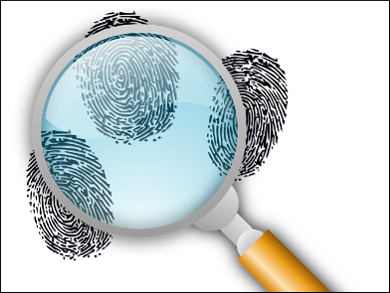Latent fingerprints contain a wealth of chemical information on the age and gender of the donor, as well as the donor’s contact with cosmetics, drugs, and explosives. However, determining a fingerprint’s age, and thus its relevance to a criminal investigation, has proven difficult.
Shin Muramoto and Edward Sisco, National Institute of Standards and Technology (NIST), Gaithersburg, MD, USA, used time-of-flight secondary ion imaging mass spectrometry (TOF-SIMS) to measure the diffusivity of saturated fatty acid molecules from fingerprints on a silicon wafer.
For fingerprints up to 96 hours old, diffusivities followed a power function with respect to molecular weight. After one hour, secondary ion images clearly showed fingerprint ridge patterns. After 24 hours, diffusion had begun into the “valley” regions of the fingerprint and onto the bare substrate. After 48 hours, the ridges and valleys are chemically indistinguishable. The diffusion rates for the molecules studied depended only on their molecular weights.
Diffusivity rates may differ depending on the substrate material, roughness, and surface contaminants. The method may not work for older fingerprints, as the molecules do not migrate indefinitely and there is a finite amount of material in any given fingerprint.
- Strategies for Potential Age Dating of Fingerprints through the Diffusion of Sebum Molecules on a Nonporous Surface Analyzed Using Time-of-Flight Secondary Ion Mass Spectrometry,
Shin Muramoto, Edward P. Sisco,
Anal. Chem. 2015.
DOI: 10.1021/acs.analchem.5b02018




